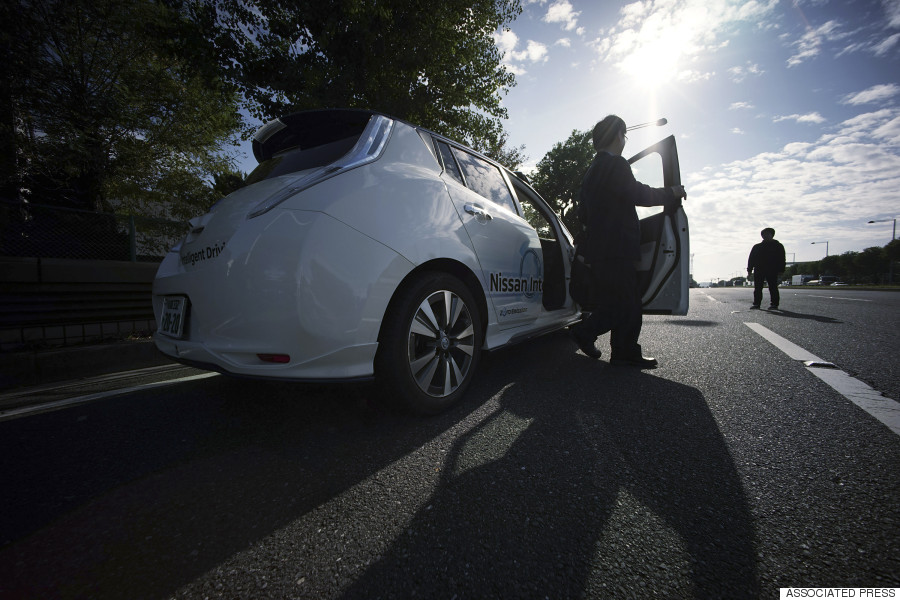- Direct Mail,
- Telemarketing,
- Direct Response Advertising,
- Internet, or online, marketing.
Direct Mail
In the United States, the roots of Direct Marketing can be traced to Benjamin Franklin who used Direct Mail to market Poor Richard's Almanac throughout the American colonies starting in 1732. Direct Mail continued to flourish with the creation of the Montgomery Ward catalog in 1872 and the Sears catalog in 1888. These catalogs were popular since a large segment of the American population lived outside of cities and towns that had stores with sufficient product choices. As more people migrated to cities and suburbs, direct mail became popular for those that wanted to shop anonymously or could not easily travel to available stores. In its best form, Direct Mail provides a convenient way for prospects to receive information about products they want and order them without leaving the comfort of their home or office. In its worst form, organizations send unwanted mailings to people that are not interested in the products being promoted. Of course, unwanted mailings are also known as "junk" mail, and their electronic equivalent is called "spam."
Telemarketing
Some might argue that telemarketing began with the invention of the telephone, but marketers began to use it on a significant scale in the late 1970's with the introduction of WATS lines for economically calling out to prospective customers and toll-free numbers for prospects to call in without paying for the call. This created the two main components of telemarketing - (1) Inbound (toll-free numbers are provided for customers to call in) and (2) Outbound (telemarketers call prospects). In its best form, companies use outbound telemarketing to answer questions, provide customer service, facilitate the ordering of desired products, and cross-selling (which some mistakenly confuse with upselling). In its most hated form, strangers "cold call" prospects, interrupt what they are doing, and try to sell them something they do not want. Some uses of outbound telemarketing became so annoying that a law was passed creating a Do Not Call Registry.
Even so, outbound telemarketing can be very effective under the following conditions:
- Prospect has given prior permission or wants the company to call,
- Product is highly desirable or greatly needed,
- Telemarketer is skillful and properly trained,
- Telemarketer listens to the desires of the people that answer the phone (rather than try to keep them on the line when they want to end the call).
Direct Response Advertising
Direct Response Advertising is advertising with a goal of getting the prospect to order the product directly from the ad. Some examples of direct response advertising are a direct mail piece with a postage-paid business reply card that is used to order the product, a TV ad that provides a toll-free phone number to order, and an email that provides a link to order the product from a Web site.
Internet and Mobile
Perhaps the method that has caused the most explosive growth of Direct Marketing is Internet marketing. There are two main reasons for this - (1) convenience and (2) economics. Even though the Internet has not reached "adulthood" (in reference to the beginning of its commercial use in 1995), nothing is more convenient or economical than the Internet for researching and ordering products. Even so, those that are using the Internet and related mobile technologies for marketing would be far more effective if they better understood the other Direct Marketing methods described above. Knowing how to use the Internet and its mobile "offspring" in conjunction with direct mail, telemarketing, and direct response advertising can create a synergistic force for marketing products most efficiently and effectively. Some people live online and some people don't. Those that live on the Internet may not be online when a company needs to get their attention. Additionally, repetition of the information off-line helps them remember any exposure online. Similarly, those that spend most of their time off-line, can learn more about products when off-line marketing drives them online. A poster in a shopping mall, a direct mail post card with a coupon, or a display in a retail store may get their attention. If these offline devices have a link or QR code, prospects can be transported to a Web site that gives them the opportunity to find out more about the product, provides them with reviews from product users, helps them find where they can buy it, and enables them to order it directly. Taking this integration of direct marketing methods further by combining them with other off-line marketing methods can give marketers the greatest power at the lowest cost.
Direct Marketing can lower sales costs
One powerful example of integrated Direct Marketing used in conjunction other forms of marketing is in the area of personal selling. In a previous post, I talked about the importance of personal selling to success in business. When it comes to promoting products, however, personal selling is also one of the most expensive methods in a marketer's toolkit. According to the latest studies by McGraw-Hill, it costs $137.02 for an industrial sales call and takes an average of 4.3 calls, or a total cost of $589.18, to close a sale. Since it is not possible to make a fraction of a call, the real-world cost (using 5 calls to close a deal) is $685.10. That might work for selling airplanes and satellite systems to billion-dollar clients. It would be too expensive for selling many other products. That's the bad news. The good news is that sales people can use the Internet and other Direct Marketing techniques for some (or even all) of the calls - thereby lowering overall sales costs.
Social media
As discussed above, just about everyone is talking about using social media in marketing products. The problem is too many don't know how to effectively do it. While "earned media" techniques such as hauling videos represent very exciting new ways for promoting products, most of them are experimental and outside the control of your business. In an effort to take advantage of social media without ceding too much control, marketers need to have some understanding of popular social media channels and how to integrate them with other Direct Marketing methods.
- Facebook has a large number of active users (over 1.55 billion at last count) and a lot of data on users so that advertisers can better target them. Since people go to Facebook to interact with friends and family, they do not like intrusions from companies. However, a lot of friends and family recommend products on Facebook, and company pages are very popular places for prospects to learn about products, discover new uses, find discounts, and share all this with their friends. At the very least, Facebook can make more brand impressions than other media. Companies pay3 million for the opportunity to reach roughly 110 million Super Bowl viewers one day a year. On Facebook, they have potential to reach a much larger audience at a much lower cost every day of the week. While Facebook limits ad sizes to very small spaces so as not to ruin user experiences, good marketers can make effective use of the space allotted with concise headlines.
- Twitter is great for those that know how to write good headlines since it limits users to 140 characters. While it accounts for much less Web traffic than Facebook and other social media, Twitter users tend to be more influential. Also, Twitter can easily be linked to other SM sites, such as Facebook, so that if you post on Twitter, your Tweet can automatically appear on Facebook simultaneously. Twitter has proven to be very effective in responding to complaints, rumors, and factual mistakes for damage control and to provide better customer service. Companies that have learned to use Twitter in this way have been able to "turn negatives into positives" and build closer relationships with their constituents.
- YouTube provides a place for companies large and small to reach their target audience without paying the high "real estate" costs of commercial TV channels. Furthermore, YouTube videos can be shared, and if they go viral, the numbers of viewers that actually watch the commercial can rival and even surpass TV audiences. YouTube viewers can also play the videos over and over again as well as share them with even larger networks of viewers enabling advertisers to make more brand impressions and greater sales.
- Linked In is good for business markets. The HR departments of businesses use it to find candidates, and businesses can put profiles of their products and white papers on the site, and use it to promote their business. According to Linked In, 43% of marketers have found a customer on Linked In during 2014.
Integrating Social Media
To increase the marketing power of social media, marketers should be sure to integrate it with all other direct and non-direct channels. Direct mail, telemarketing, and direct response advertising should have links to social media, and vice versa. A lot of companies ask market targets to visit their Web site and "like" or "follow" them on social media, but too often they do not provide the benefit for doing so. Similarly, social media rarely ties campaigns to off-line and other direct marketing efforts - missing opportunities for marketing synergy, making additional brand impressions, and increasing sales. Companies with effective campaigns have linked product packaging and off-line media to social and online media. In addition to asking people to "like" or "follow" or visit social media and Web sites, they have given people codes in traditional media and on product packaging that give those that make the effort a chance to win something or save money. The feedback and contact information provided is more than worth the costs of the prize, rebate, or discount, and gives the company a chance to improve the product or add contact information to their database.
Advergaming
Some companies have successfully used Advergaming as a way to tie their media efforts together. When it works best, users have to go online and off for clues that teach them about the benefits of the products and company. They have fun while they are learning, are engaged, and remember the benefits. As a result, brand impressions and reasons to buy the products are better planted in the brains of market targets.
The power of Direct Marketing
Direct marketing has grown in power for a variety of factors that include the following.
- Less time. Market targets are busier than ever before since they have to work harder to earn a living.
- Less hassles and dangers. Increasing traffic, parking costs, and other hassles have reduced the desire for buyers to go to retail stores to do their shopping.
- Less expensive. The costs of buying and marketing products in "non-direct" ways has skyrocketed at the same time that financial disruptions, natural disasters, and government dysfunction has forced buyers to become more frugal.
- More convenient. The Internet is perhaps the most convenient way for buyers to research products, comparison shop, and order from their home, office, or mobile device.
- Anonymous. Some buyers prefer shopping for certain products anonymously.
Based on these economic and convenience factors, Direct Marketing is expected to grow rapidly. Marketers that better understand Direct Marketing and how to integrate its various components into a synergistic mix of marketing strategies will reap the benefits. And, the benefits are substantial since the Direct Marketing Association estimates that Direct Marketing produced $2.05 trillion in sales in 2012 - representing roughly 8.7% if US GDP (Gross Domestic Product). Since the economy has improved over the past 3 years, current numbers, while not readily available, are sure to be significantly higher. If you want to do better marketing without blowing your budget, Direct Marketing is likely to be very good for you. Best of luck.
-- This feed and its contents are the property of The Huffington Post, and use is subject to our terms. It may be used for personal consumption, but may not be distributed on a website.




































